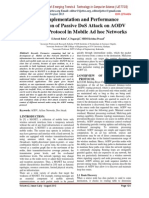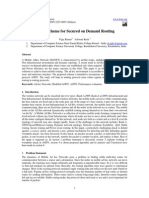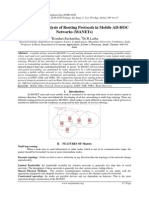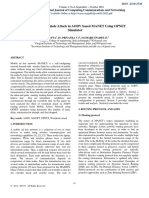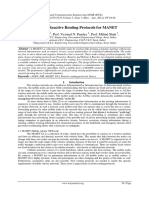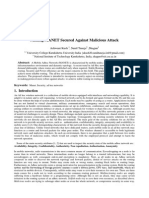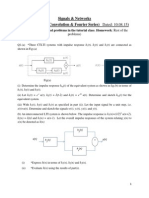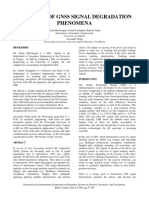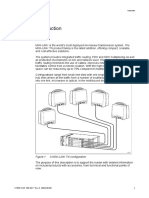0% found this document useful (0 votes)
54 views6 pagesSecurity in Adhoc Network
The document discusses security issues in mobile ad hoc networks (MANETs). It describes MANETs and how they differ from traditional wireless networks by not relying on fixed infrastructure. It then discusses possible attacks against MANETs, including passive eavesdropping, active attacks by modifying or fabricating routing messages, and impersonation attacks. Finally, it outlines some solutions for securing MANETs, including securing the routing protocols used and packet forwarding process through methods like digital signatures and authentication.
Uploaded by
Anupriya VCopyright
© © All Rights Reserved
We take content rights seriously. If you suspect this is your content, claim it here.
Available Formats
Download as PDF, TXT or read online on Scribd
0% found this document useful (0 votes)
54 views6 pagesSecurity in Adhoc Network
The document discusses security issues in mobile ad hoc networks (MANETs). It describes MANETs and how they differ from traditional wireless networks by not relying on fixed infrastructure. It then discusses possible attacks against MANETs, including passive eavesdropping, active attacks by modifying or fabricating routing messages, and impersonation attacks. Finally, it outlines some solutions for securing MANETs, including securing the routing protocols used and packet forwarding process through methods like digital signatures and authentication.
Uploaded by
Anupriya VCopyright
© © All Rights Reserved
We take content rights seriously. If you suspect this is your content, claim it here.
Available Formats
Download as PDF, TXT or read online on Scribd
/ 6








